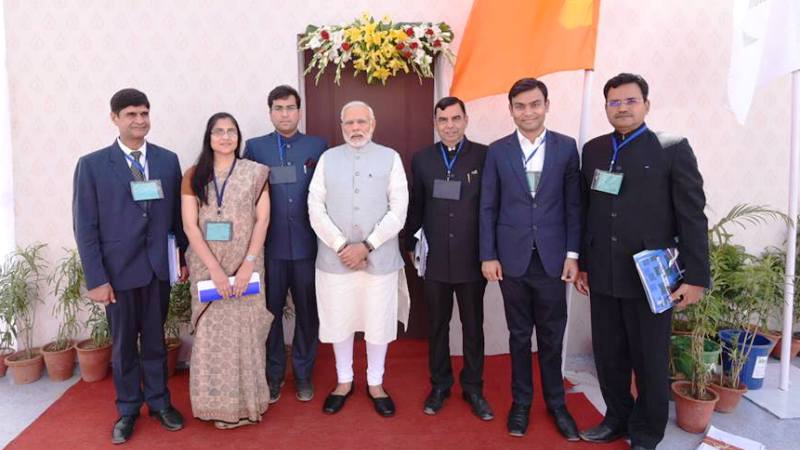Sirohi News | On the recent visit of our PM Narendra Modi to Jhunjhunu on Women’s Day 8th March 2018 he also met five collectors of backward districts in the state; The meeting was conducted in Jaisalmer along with collectors from Jaisalmer, Karauli, Dholpur, Baran and Haryana’s Mewat. As per information collected, PM met every collector individually and enquired about the status of projects and innovative ideas initiated by collectors for their district. The PM also pushed for developing infrastructure and raising education levels in the state.
So here we are sharing the vision 2022 report presented for Sirohi by Sirohi Collector Mr. Sandesh Nayak.
Vision-2022
We Aspires to leverage our agricultural and tourism potential to improve the quality of life of our citizen through inclusive and innovative approach.
Sirohi- A Background
Sirohi city is one of the known name in the southern Rajasthan. Sirohi is an administrative headquarters of Sirohi district which covers five tehsils- Abu Road, Sheoganj, Reodar, Pindwara, and Sirohi itself. orderaccutaneonline District has evolved its name from “Siranwa” hills on the western slope where it is situated. The name Sirohi was derived from head (Sir) of the desert (Rohi), according to Colonel Tod, who wrote about it in his book “Travels in Western India”. Another story about the origin of its name is that it derived from “Sword”. Deora Chauhans, the ruler of Sirohi state were popularly known for their bravery and famous swords.
Sirohi district is situated in the south-west part of Rajasthan between the parallel of 24°20′ and 25°17′ North Latitude and 72°16′ and 73°10′ East Longitude. It is bounded by district Pali in the north-east, district Udaipur in the east, Jalore in the west and Banaskantha district of Gujarat in the south. The total geographical area of the district is 5136 Sq. Km., which covers about 1.52 percent of the total area of Rajasthan. Sirohi is the third smallest district of Rajasthan, after Dungarpur and Banswara.
Sirohi district is broken up by hills and rocky ranges. The granite massif of Mount Abu divides the district into two portions, running from north-east to south-west. The south and south-east part of the district, which lies between Mount Abu and the main spine of the Aravallis, is mountainous and rugged, and is drained by the West Banas River. Abu Road, a station on the main Delhi-Ahmedabad rail line, lies in the valley of the West Banas. The dry deciduous forest is common in this part of the district, and the higher elevations of Mount Abu are covered in conifer forests. Abu Road is the biggest city and the main financial hub of Sirohi district.
The portion of the district west and north of Mount Abu is drier, lying in the rain shadow of the mountain, which blocks the southwest monsoon. The southwest corner of the district is drained by the Sukri River, an intermittent stream that drains the western slope of Mount Abu. The north-western portion of the district is drained by tributaries of the Luni River. The North-western thorn scrub forests cover the western and northern portion of the district. Warada is the last village of Sirohi located on Sirohi-Siyana Road.
After Independence an agreement was signed between Central Government and minor ruler of Sirohi State, with this the State Administration of the Sirohi State was taken over by Bombay Government from 5 January 1949 to 25 January 1950. The first administrator representing a bombay state was Prema Bhai Patel. After final merger with Rajasthan in 1950, an area of 787 km2 consisting of Aburoad and Delwara tehsils of Sirohi district was renamed with the Bombay State on 1 November 1956, after the recommendation of the State organization Commission, which forms the present position of the district.

Vision – Sector wise Targets
“Vision without action is merely a dream. Action without vision just passes the time. Vision with action can change the world”
This chapter lays down the proposed sector-wise targets that shall be essential in giving an overall direction for the Vision 2022. In doing so, alignment with Rajasthan 2030 Vision and the PM’s Transformative Agenda has been attempted for a coordinated development strategy. …
For the complete vision report (pdf) for sirohi presented please click here

